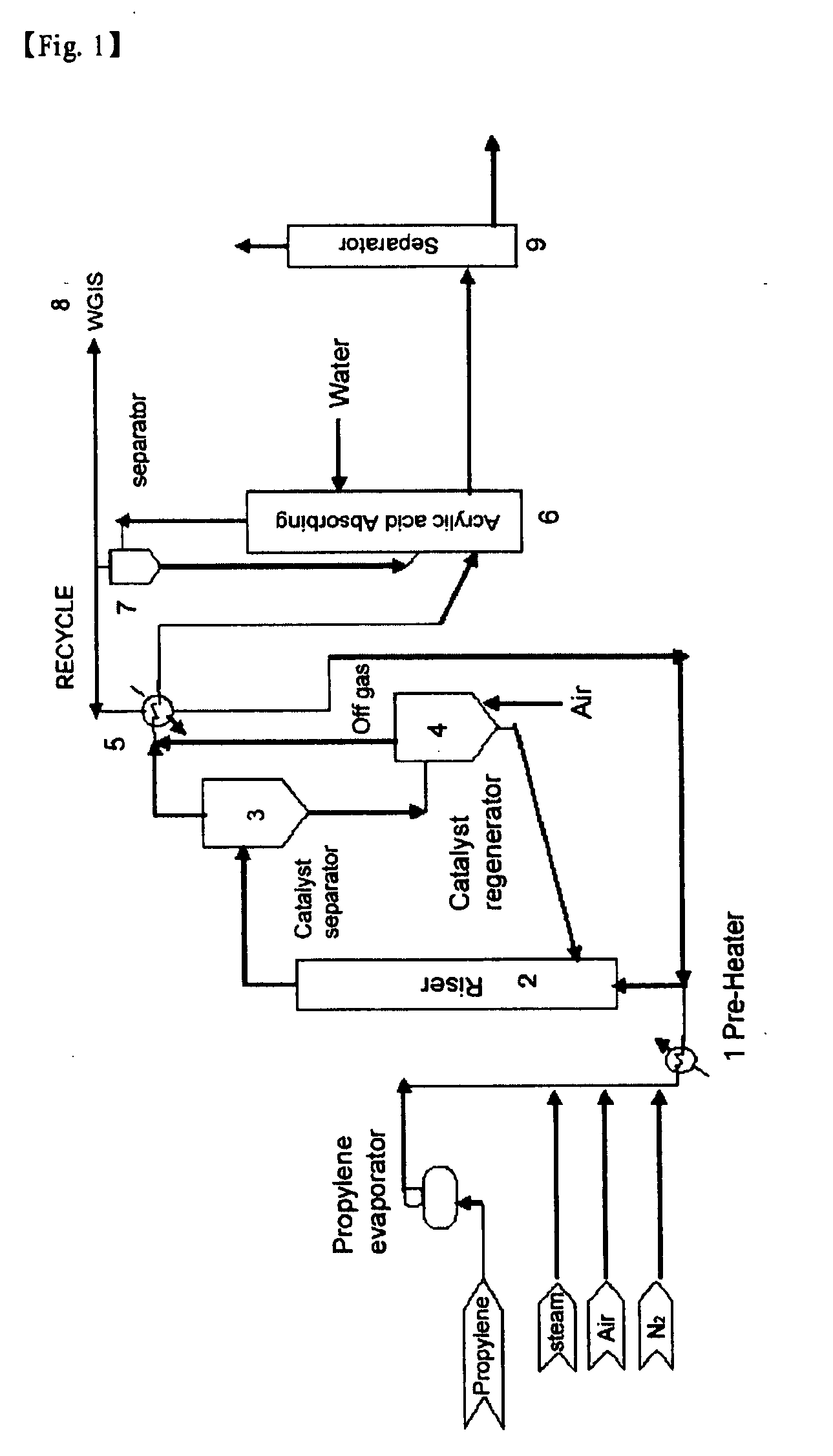Multi-metal oxide catalyst and method for producing (METH)acrylic acid by using the same
- Summary
- Abstract
- Description
- Claims
- Application Information
AI Technical Summary
Benefits of technology
Problems solved by technology
Method used
Image
Examples
preparation example
Catalyst Preparation Example
Preparation Example 1
Catalyst 1
[0056]2500 ml of distilled water was heated and stirred at 70 to 85° C. and 1000 g of ammonium molybdate was dissolved therein to form a solution 1. Then, 274 g of bismuth nitrate, 228 g of ferrous nitrate and 2.3 g of potassium nitrate were added to 400 ml of distilled water, the materials were mixed thoroughly, 71 g of nitric acid was added thereto, and the materials were dissolved sufficiently to form a solution 2.686 g of cobalt nitrate was dissolved in 200 ml of distilled water, so as to form a solution 3. After mixing the solution 2 with the solution 3, the mixed solution was further mixed with the solution 1 while the temperature was maintained at 40 to 60° C., so as to provide a catalyst suspension.
[0057]The catalyst suspension was dried and the obtained cake-shaped solid was pulverized into a size of 150 μm or less. The resultant catalyst powder was mixed with a predetermined amount of water for 2 hours, and formed ...
preparation example 2
Catalyst 2
[0058]Catalyst 2 was provided in the same manner as described in Preparation Example 1, except that 64 g of niobium chloride were further added to form a solution 1. The resulting catalyst had the following elemental composition except oxygen:
Mo12 Nb0.5 Bi1.2 Fe1.2 Co5 K0.05
preparation example 3
Catalyst 3
[0059]Catalyst 3 was provided in the same manner as described in Preparation Example 1, except that 64 g of niobium chloride were further added to form a solution 1 and the molded catalyst was allowed to have a diameter of 7 mm and a height of 7 mm. The resulting catalyst had the following elemental composition except oxygen:
Mo12 Nb0.5 Bi1.2 Fe1.2 Co5 K0.05
PUM
| Property | Measurement | Unit |
|---|---|---|
| Catalytic activity | aaaaa | aaaaa |
| Particle size | aaaaa | aaaaa |
| Molar ratio | aaaaa | aaaaa |
Abstract
Description
Claims
Application Information
 Login to View More
Login to View More - R&D
- Intellectual Property
- Life Sciences
- Materials
- Tech Scout
- Unparalleled Data Quality
- Higher Quality Content
- 60% Fewer Hallucinations
Browse by: Latest US Patents, China's latest patents, Technical Efficacy Thesaurus, Application Domain, Technology Topic, Popular Technical Reports.
© 2025 PatSnap. All rights reserved.Legal|Privacy policy|Modern Slavery Act Transparency Statement|Sitemap|About US| Contact US: help@patsnap.com

